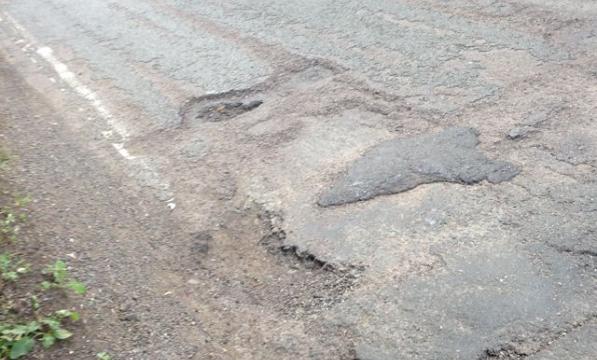Why our roads are in such a bad state

Potholes are dangerous, even lethal, for people on bikes.
But fixing potholes is a huge waste of resources: each pothole costs over £50 to mend, and the number of potholes has massively increased in recent years.
Meanwhile, that pothole is often a symptom of an underlying structural weakness in the road, or a failure to keep water out of the surface.
Data collected by the Asphalt Industry Alliance from local authorities has shown an over threefold increase in potholes, from 589,000 in 2007 to 1.9m in 2013. A quarter of all the expenditure on road maintenance goes on filling potholes, rather than sealing or resurfacing roads to prevent potholes forming in the future.

A properly resurfaced road means a more comfortable, safer ride for cycling on, but it also offers the potential to rethink the layout of the road and consider whether space for cycling can be created, or even, more simply, whether the current layout of lines and road markings are necessary. For instance, on many roads, removing the centre line can reduce motor traffic speeds, and may increase the distance overtaking drivers give to people on bikes (forthcoming publication).
In part the increase in potholes was due to the very harsh winters of 2009-2011, which in some parts of the country were the most severe periods of snow and cold in decades.
However, that was only part of the problem: the cold weather needn't have done so much damage if the roads had been better maintained.
The main reason lies further back: years of under investment and failure to treat and properly maintain roads. The following graph shows that the proportion of roads that received some form of treatment - normally surface dressing - dropped from over 10% of minor roads in 1991 to just 4% in 2013. In other words: back then over 15,000 miles of minor roads were treated in England each year; now it's just over 6,600 miles.

Furthermore, the usual form of maintenance is surface dressing. You'll know this as the piles of gravel that suddenly appear on a sticky layer of gravel on country lanes in the summer.
If laid incorrectly, or on rough surfaces, this leads to a terrible cycling surface, with loose chips at first, and a bumpy, harsh ride for the next few years. CTC would much prefer roads to be fully resurfaced, but, as this costs almost 9 times as much as dressing, it is understandable that local authorities, with tight budgets, resort to this method to waterproof the roads and improve skid resistance.
Many people complain about surface dressing, but even this approach is used less than half as frequently as it used to. I agree that surface dressing is awful, but if it prevents potholes forming (which it will only do if laid correctly), then it's probably worth doing, for both safety and fiscal reasons, even if ride quality suffers.

To bring our road network - particularly the minor roads where most cycling takes place - up to standard local authorities will need billions more to be able to properly resurface the lanes and streets.
In the meantime, it's still worth reporting potholes and ensuring that the most dangerous ones are brought to the attention of your local authority.

